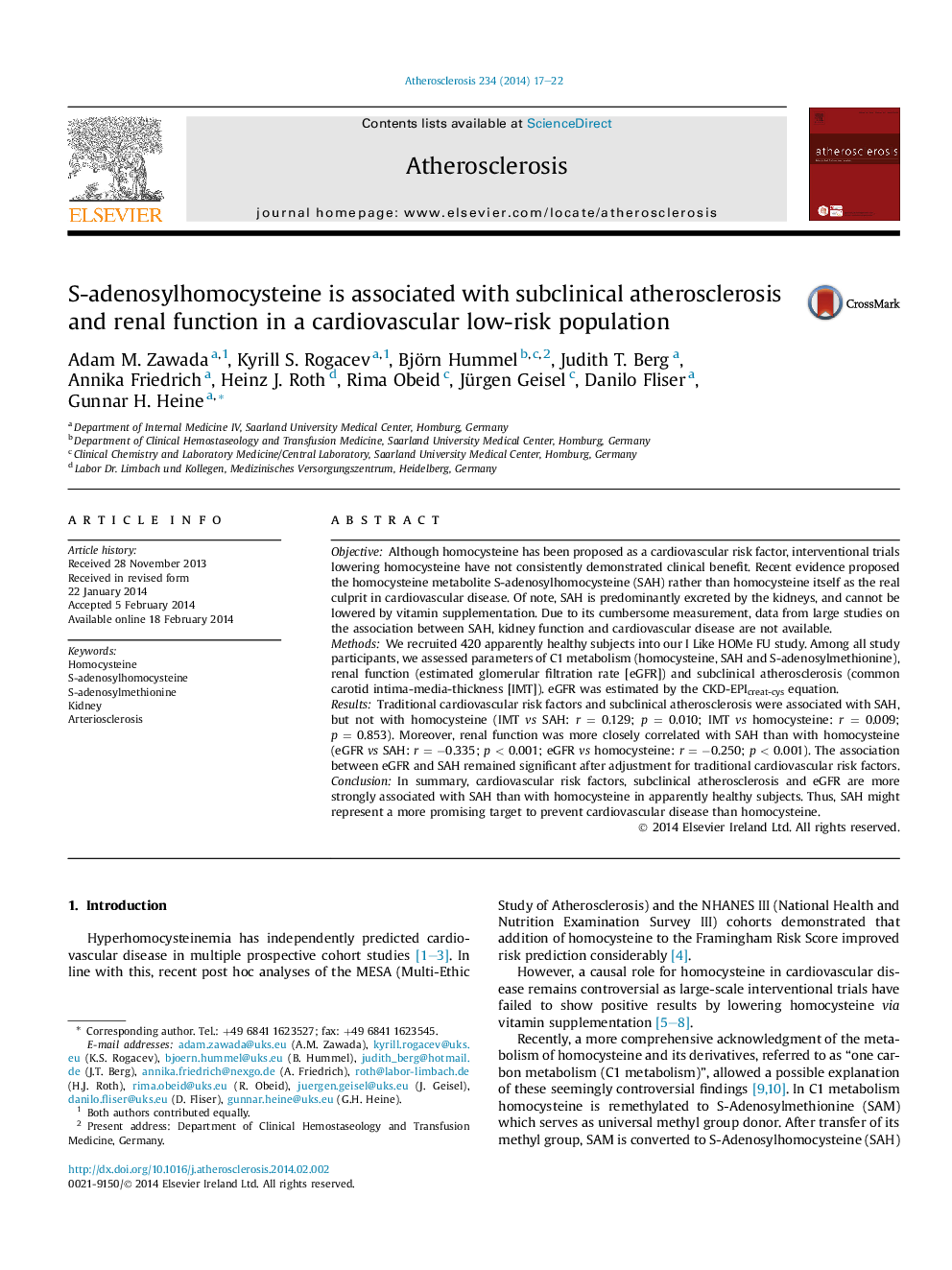| Article ID | Journal | Published Year | Pages | File Type |
|---|---|---|---|---|
| 5946482 | Atherosclerosis | 2014 | 6 Pages |
â¢I Like HOMe analyzed C1 metabolism parameters among apparently healthy adults.â¢Subclinical atherosclerosis is more closely associated with SAH than with homocysteine.â¢Moreover, early kidney dysfunction is more closely associated with SAH than with homocysteine.â¢SAH might represent a more promising target in CVD prevention than homocysteine.
ObjectiveAlthough homocysteine has been proposed as a cardiovascular risk factor, interventional trials lowering homocysteine have not consistently demonstrated clinical benefit. Recent evidence proposed the homocysteine metabolite S-adenosylhomocysteine (SAH) rather than homocysteine itself as the real culprit in cardiovascular disease. Of note, SAH is predominantly excreted by the kidneys, and cannot be lowered by vitamin supplementation. Due to its cumbersome measurement, data from large studies on the association between SAH, kidney function and cardiovascular disease are not available.MethodsWe recruited 420 apparently healthy subjects into our I Like HOMe FU study. Among all study participants, we assessed parameters of C1 metabolism (homocysteine, SAH and S-adenosylmethionine), renal function (estimated glomerular filtration rate [eGFR]) and subclinical atherosclerosis (common carotid intima-media-thickness [IMT]). eGFR was estimated by the CKD-EPIcreat-cys equation.ResultsTraditional cardiovascular risk factors and subclinical atherosclerosis were associated with SAH, but not with homocysteine (IMT vs SAH: r = 0.129; p = 0.010; IMT vs homocysteine: r = 0.009; p = 0.853). Moreover, renal function was more closely correlated with SAH than with homocysteine (eGFR vs SAH: r = â0.335; p < 0.001; eGFR vs homocysteine: r = â0.250; p < 0.001). The association between eGFR and SAH remained significant after adjustment for traditional cardiovascular risk factors.ConclusionIn summary, cardiovascular risk factors, subclinical atherosclerosis and eGFR are more strongly associated with SAH than with homocysteine in apparently healthy subjects. Thus, SAH might represent a more promising target to prevent cardiovascular disease than homocysteine.
